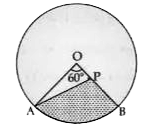In an Arithmetic Progression, . Find the Arithmetic Progression. Solution in Kannada
The correct Answer is:
Step by step video, text & image solution for In an Arithmetic Progression, T_10=175 and T_20=475. Find the Arithmetic Progression. by Maths experts to help you in doubts & scoring excellent marks in Class 10 exams.
Updated on:21/07/2023Topper's Solved these Questions
- ARITHMETIC PROGRESSIONSBOOK - OSWAAL PUBLICATIONCHAPTER - ARITHMETIC PROGRESSIONSEXERCISE - LONG ANSWER TYPE QUESTION-I
11 Videos
- ARITHMETIC PROGRESSIONSBOOK - OSWAAL PUBLICATIONCHAPTER - ARITHMETIC PROGRESSIONSEXERCISE - LONG ANSWER TYPE QUESTIONS-II
13 Videos
- ARITHMETIC PROGRESSIONSBOOK - OSWAAL PUBLICATIONCHAPTER - ARITHMETIC PROGRESSIONSEXERCISE - VERY SHORT ANSWER TYPE QUESTION
8 Videos
- AREAS RELATED TO CIRCLES BOOK - OSWAAL PUBLICATIONCHAPTER - AREAS RELATED TO CIRCLES EXERCISE - LONG ANSWER TYPE QUESTIONS - I
20 Videos
- CIRCLES BOOK - OSWAAL PUBLICATIONCHAPTER - CIRCLES EXERCISE - TEXTBOOK CORNER (EXERCISE 4.2)
13 Videos
Similar Questions
Find the sum of all natural numbers between 200 and 300 which are divisible by 6.
View SolutionThe sum of four consecutive terms which are in an arithmetic progression is 32 and the ratio of the product of the first and the last term to the product to two middle terms is 7:15. Find the number.
View SolutionWhat is the common difference between the consecutive terms of an A.P.
View SolutionIn the given figure, AOB is a sector of angle 60∘ of a circle with centre O and radius 17 cm . If AP ⊥ OB and AP = 15 cm find the area of the shaded region.

View SolutionFrom a point Q ,the length of the tangent to a circle is 24 cm and the distacne to Q from the centre is 24.5 cm.The radius of the circle is
(a) 4.92 cm
(b)12 cm
©15 cm
(d)24.5 cm
View SolutionARITHMETIC PROGRESSION | PROPERTIES OF ARITHMETIC PROGRESSION
View SolutionGiven Arithmetic Progression 12,16,20,24, … Find the 24th term of this progression.
View SolutionThe nth term of an arithmetic progression is 3n-1. Find the progression.
View SolutionArithmetic Progression(A.P) | Arithmetic progression problems
View SolutionHarmonic Progression | Arithmetic-Geometric Progression
View SolutionArithmetic Progression(A.P) | Arithmetic progression problems
View SolutionHarmonic Progression | Arithmetic-Geometric Progression
View SolutionFind out which of the following sequences are arithmetic progressions. For those which are arithmetic progressions, find out the common difference. :- 3,6,12,24,….
View SolutionARITHMETIC PROGRESSION
View SolutionFind the indicated terms in each of the following arithmetic progression a=3,d=2,tn,t10
View Solution
